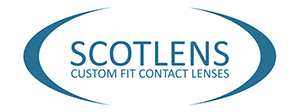PATIENT ASSESSMENT & SELECTION
Learning Outcomes
After completing this module you should understand the:
- Ideal candidates for NOCTURNAL™ night lens fitting
- Limitations for fitting patients who are not ideal candidates
- Contraindications for fitting
IDEAL PATIENTS
The following patients are ideal candidates, that should enjoy good quality vision with no need for additional correction
- Patients who achieve a good acuity with a spherical correction up to -5.00D
- Patients with astigmatism less than -1.50 dioptres WTR or -0.75 dioptres ATR. The cyl value should be less than half the myopia i.e. -2.25/-1.00×180
- Patients with flat keratometry readings between 8.40mm and 7.30mm
- Patients with symmetrical corneal topography maps
- Patients with a corneal diameter greater than 11.0mm
- Patients motivated by the freedom night lenses will provide them
- Patients with no presbyopia or who tolerate monovision correction
POSSIBLE PATIENTS
These patients are unlikely to get a full correction, but may be happy with the outcome especially if prepared to top up their correction with over-specs.
- Myopia greater than -5.00 dioptres is likely to result in under-correction
- Refractive astigmatism greater than -1.50 dioptres WTR -0.75 dioptres ATR is likely to remain in the residual refraction
- Astigmatism greater than twice the sphere power ie. -1.00/ -2.25×180 is likely to remain in the residual refraction
- Patients with non-average corneas, large diameter, flat or steep corneas (HVID >12.4, K<7.30mm, K>8.40mm)
- Patients with asymmetrical topography that indicates the treatment zone will form away from the visual axis
- Patients with large pupils may experience discomfort from glare
CONTRAINDICATED PATIENTS
Patients with any of the below are not suitable for lens wear:
- Any patient unable to follow the instructions and safe practice needed for contact lens wear
- Disease, injury, or any abnormality affecting the cornea, conjunctiva, or eyelids
- History of recurrent erosions
- Active corneal or conjunctival infections
- Corneal hypoesthesia
- Allergy to lens care solutions
PRE-FIT PATIENT EXAMINATION
A contact lens examination is performed with the addition of topography screening
- Refraction and acuities
- SE refraction and acuities (this is the anticipated outcome)
Slit lamp examination
- Corneal health
- Conjunctival roughness
Topography assessment
- Measure HVID
- Anticipate treatment zone position
BASELINE TOPOGRAPHY
Ensure you have multiple good quality baseline maps.
Capture should cover the whole cornea with minimal lid/lash shadows.
Ensure no tear film abnormalities.

Ideal patients will have topography that is spherical (left), or that the toricity is centrally located (middle).
Limbus to limbus astigmatism (right) is less likely to be corrected.

Assess the colour contour skew.
The treatment zone is expected to form in the middle of the yellow/green contour (left).
If this is not centred the treatment zone will not be on the visual axis, and can result in under-correction or induced Rx/aberrations (right).

NB. Very few patients have optimal topography. It is usually best to proceed with fitting unless the patient has high Rx and high visual demands.
ORDER & SCHEDULE COLLECTION
- Provide the NOCTURNAL™ Brochure to your patient. It contains a full explanation of what they can expect wearing NOCTURNAL™ night lenses
- Order the lenses with your login at scotlens.com
- Once you have received the lenses schedule a collection appointment and an early morning review appointment on Day 1

SUMMARY
- Ideal candidates should enjoy good quality vision with no need for additional correction.
- Possible candidates may be happy with the outcome and should be prepared to top up their correction with over-specs.
- Contraindicated patients should not be fitted.
- Good baseline topography is important.
- Provide patients with written information that outlines what they will experience wearing NOCTURNAL™ night lenses.
